What are the best substitutions for Tomato Juice?
Are you looking for the best substitutions for tomato juice? If you’re looking for substitutes for tomato juice, there are several options depending on the purpose and flavor you’re trying to achieve. Try using Fresh Tomatoes, Tomato Sauce, Tinned Tomatoes, Tomato Paste, Tomato Soup, Red Bell Peppers, Vegetable Broth, or Beet Juice.
Remember that each substitute will impact the flavor, color, and overall character of your dish differently. It’s a good idea to do a small test before using a substitute in a larger recipe. This will ensure it meets your expectations.
What is Tomato Juice?
Tomato juice is made by extracting the juice from ripe tomatoes. It is commonly used as a beverage on its own or as a base for various dishes, sauces, cocktails, and soups. Tomato juice is known for its slightly tangy and mildly sweet flavor, as well as its rich red color.
To make tomato juice, ripe tomatoes are typically washed, crushed, and strained to separate the liquid from the solids. The resulting liquid is then often pasteurized to ensure food safety and preservation. Tomato juice can be consumed on its own, served as a drink, or used as an ingredient in cooking.
Tomato juice is commonly used in dishes like soups, stews, sauces, and cocktails (like the popular Bloody Mary). It’s also a great source of vitamins, minerals, and antioxidants. This makes it a nutritious and healthy choice when consumed as part of a balanced diet.
Let’s take a closer look at the suggestions for substitutions for tomato juice.
Okay, before we look at your tomato juice substitute options, let’s deal with that empty cupboard situation!
Where can I buy Tomato Juice?
If you want to be more prepared and ensure you don’t run out of tomato juice then you should stock up now.
Nowadays most delicatessens and general supermarkets stock a wide variety of tomato juice. Or if you prefer you can also purchase tomato juice on-line.
So why not jump on and place your order today.
STOCK UP NOW!
Campbells Tomato Juice – 6 pack
5* rating! Delicious tomato flavor from each bottle of tomato juice. Use in sauces, marinades, cocktails and mocktails.
Convenient 6-pack means you only open what you need. Store the rest ready for the next time.
What can I substitute for Tomato Juice?
Here are some of the best ingredients to substitute the flavor and role that tomato juice provides in your recipes.
- Fresh Tomatos
- Tomato Sauce
- Tinned Tomatos
- Tomato Paste
- Tomato Soup
- Red Bell Peppers
- Vegetable Broth
- Beet Juice
Tomato Juice substitutions
Fresh Tomatoes
Substituting fresh tomatoes for tomato juice in recipes can be done but you will need to make a few adjustments. Keep in mind that tomato juice provides a concentrated tomato flavor and liquid consistency that fresh tomatoes might not entirely replicate.
Be aware that fresh tomatoes might not have the same concentrated flavor as tomato juice. Therefore, you may need to adjust the seasoning in your recipe. Always taste your mixture and add a bit of salt, pepper if needed. You can also add a touch of sugar to enhance the flavor.
If your recipe requires cooking, keep in mind that fresh tomatoes might release more liquid during cooking than tomato juice would. Adjust your cooking time and techniques accordingly to ensure your dish turns out well.
Want to make your own homemade tomato juice? We have included a quick homemade recipe for tomato juice at the end of this article for you to try.
Remember that while using fresh tomatoes can be a good alternative, the final result might not be exactly the same as when using tomato juice. However, it can bring a fresh and vibrant flavor to your dishes.
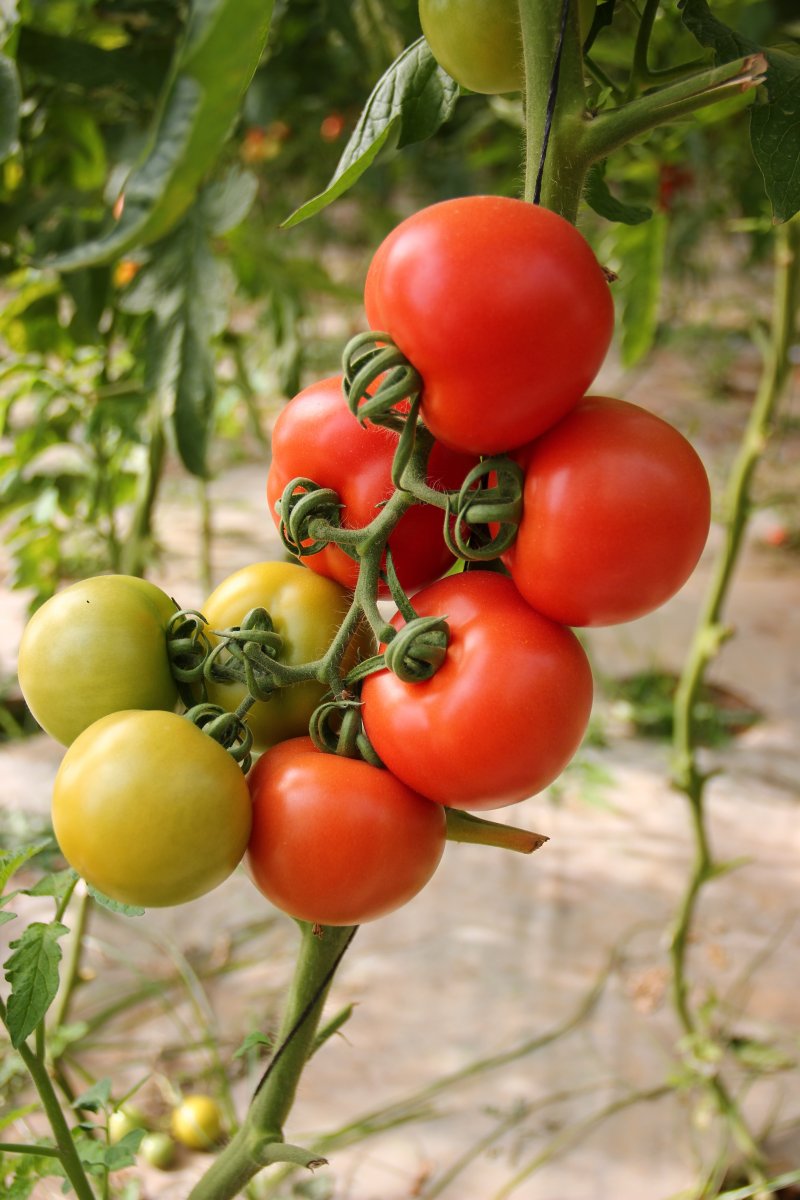
Tomato Sauce
Most people have tomato sauce in their cupboard and you will be pleased to know it can be used as a substitute. However, you’ll need to make some adjustments to account for the differences in consistency and flavor.
You will need to dilute the tomato sauce as it is thicker than tomato juice. Diluting it will allow you to achieve a similar liquid consistency. For every cup of tomato juice required, use about 1/2 to 3/4 cup of tomato sauce and add 1/4 to 1/2 cup of water, broth, or another liquid. You may need to adjust the amount of liquid based on how thick the tomato sauce is and how thin you want the final mixture to be.
You can also blend the diluted tomato sauce in a blender or food processor. This can help smooth out any chunks and create a more uniform texture. If you want an even smoother texture, you can strain the blended mixture through a fine mesh strainer or cheesecloth. This will help remove any remaining solids.
Keep in mind that tomato sauce often contains additional seasonings, such as herbs and spices. Always taste your diluted mixture and adjust the seasoning as needed to match the flavor profile of tomato juice. You might need to add a touch of salt, sugar, and other seasonings to achieve the desired taste.
IIf your recipe requires cooking the tomato juice, such as in soups, stews, or cocktails, you’ll likely need to adjust the cooking time to allow the flavors to meld and the dish to thicken.
Adding tomato sauce instead of tomato juice should work in most cases. Recipes where the thickness of tomato sauce is not an issue, such as soups or stews, the swap should be okay, but remember it might not be suitable for cocktails or dishes where the liquid consistency of tomato juice is crucial.
Remember that while tomato sauce can be a suitable substitute for tomato juice, the final result might have a slightly different flavor and texture. It’s always a good idea to test the substitution in a small batch or adjust the recipe as needed to achieve the desired outcome.

Canned Tomatos
Do you have tinned tomatoes in our cupboard? Canned tomatoes are a versatile ingredient and can work very well as a base for creating a tomato liquid similar to tomato juice.
For every cup of tomato juice required, you can use about 1 cup of canned tomatoes. Drain the canned tomatoes to remove excess liquid, and then blend the tomatoes until smooth using a blender or food processor. This will create a tomato puree that you can use as a substitute for tomato juice.
If the blended canned tomatoes are too thick, you can add a small amount of water, broth, or other liquid to achieve the desired consistency. Start with a quarter cup of liquid and adjust as needed until you achieve a texture similar to tomato juice.
Tinned tomatoes might not have the same concentrated flavor as tomato juice, so taste the blended mixture and adjust the seasoning accordingly. You might need to add salt, sugar, and other seasonings to get closer to the flavor profile of tomato juice.
If you want a smoother texture, you can strain the blended mixture through a fine mesh strainer or cheesecloth to remove any remaining solids. This step is optional and depends on your preference and the texture you want to achieve.
Canned tomatoes are often used in cooked dishes, so if your recipe requires cooking the tomato juice, adjust the cooking time as needed. This will allow the flavors to develop and the mixture to thicken.
Using canned tomatoes as a substitute for tomato juice can work really well in many recipes, such as soups, stews, sauces, and more. However, keep in mind that the final result might have a slightly different flavor and texture compared to using store-bought tomato juice.
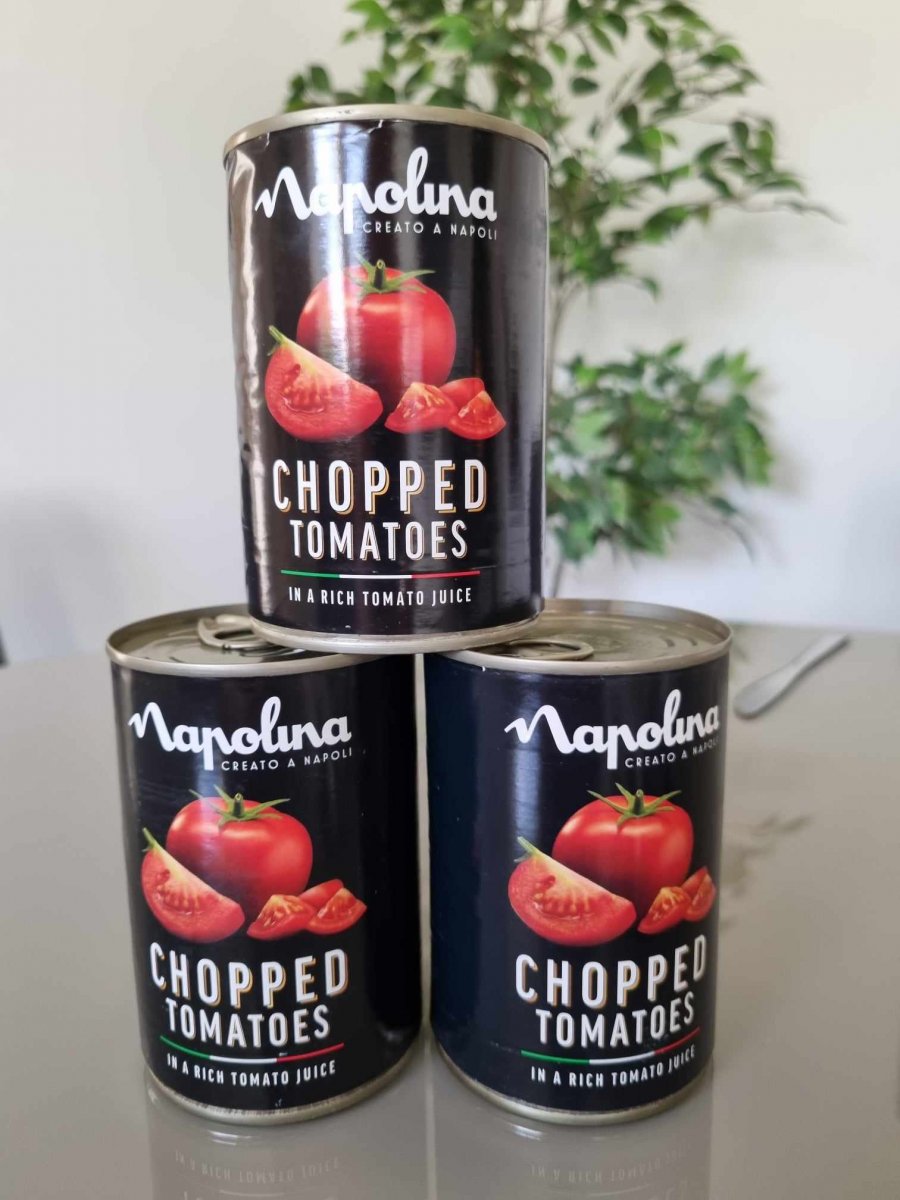
Tomato Paste
Tomato paste is quite concentrated and thick, so using it directly as a substitute for tomato juice may not provide you with the desired results. It has a strong and intense flavor, and it’s typically used in smaller quantities compared to tomato juice. However, you can use tomato paste to create a tomato liquid that’s closer to tomato juice. Here’s how:
First of all start by diluting the tomato paste. So, for every cup of tomato juice required, you’ll need to dilute the tomato paste with water to achieve a similar liquid consistency. Start with about 1-2 tablespoons of tomato paste and gradually mix it with 1 cup of water. Adjust the ratio based on your taste preferences and the desired level of tomato flavor.
Whisk or blend the diluted mixture thoroughly to ensure that the tomato paste is fully incorporated into the water. This will help you achieve a smoother and more even consistency.
Tomato paste is quite concentrated, therefore the diluted mixture might still be more intense than tomato juice. Taste the mixture and adjust the flavor by adding a pinch of salt, a touch of sugar, and any other seasonings you desire. This will help balance the flavors and make it more similar to tomato juice.
The diluted tomato paste will now be suitable for recipes that require cooking, such as soups, stews, and sauces. The cooking process will allow the flavors to mellow and blend.
Using tomato paste as a substitute for tomato juice requires careful dilution and adjustment of flavors.
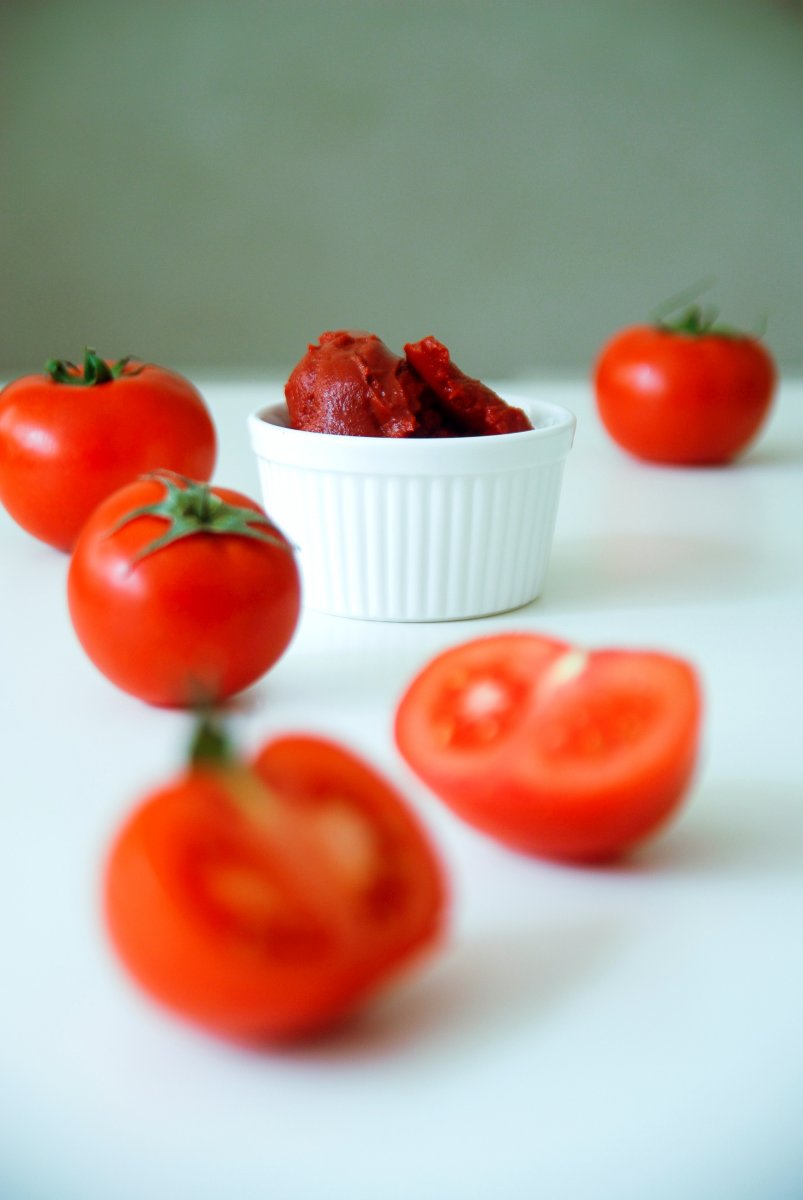
Tomato Soup
Have you a can of tomato soup in your cupbaord? Yes? Great. You can use tomato soup as a substitute for tomato juice, but there are a few things to consider due to the differences in consistency and flavor between the two. Tomato soup is typically thicker and more seasoned than tomato juice. Follow the suggestions below and you will have a great substitute ready to use.
Since tomato soup is thicker than tomato juice, you’ll need to dilute it to achieve a similar liquid consistency. For every cup of tomato juice required, use about 1/2 to 3/4 cup of tomato soup and add 1/4 to 1/2 cup of water, broth, or another liquid. Adjust the amount of liquid based on how thick the tomato soup is and how thin you want the final mixture to be.
Tomato soup is often already seasoned with herbs, spices, and other flavorings. Taste your diluted mixture and adjust the seasoning as needed to match the flavor profile of tomato juice. You might need to add a touch of salt, sugar, and other seasonings to achieve the desired taste.
If you want to achieve a smoother texture similar to tomato juice, you can strain the diluted tomato soup through a fine mesh strainer or cheesecloth to remove any remaining solids.
Keep in mind that tomato soup is typically cooked, and using it as a substitute for tomato juice would work best in recipes that require cooking, such as soups, stews, and sauces. The cooking process will allow the flavors to blend and mellow.
Consider the nature of your recipe before using tomato soup as a substitute. While it can work in many cooked dishes, it might not be suitable for cocktails or recipes where the liquid consistency of tomato juice is crucial.
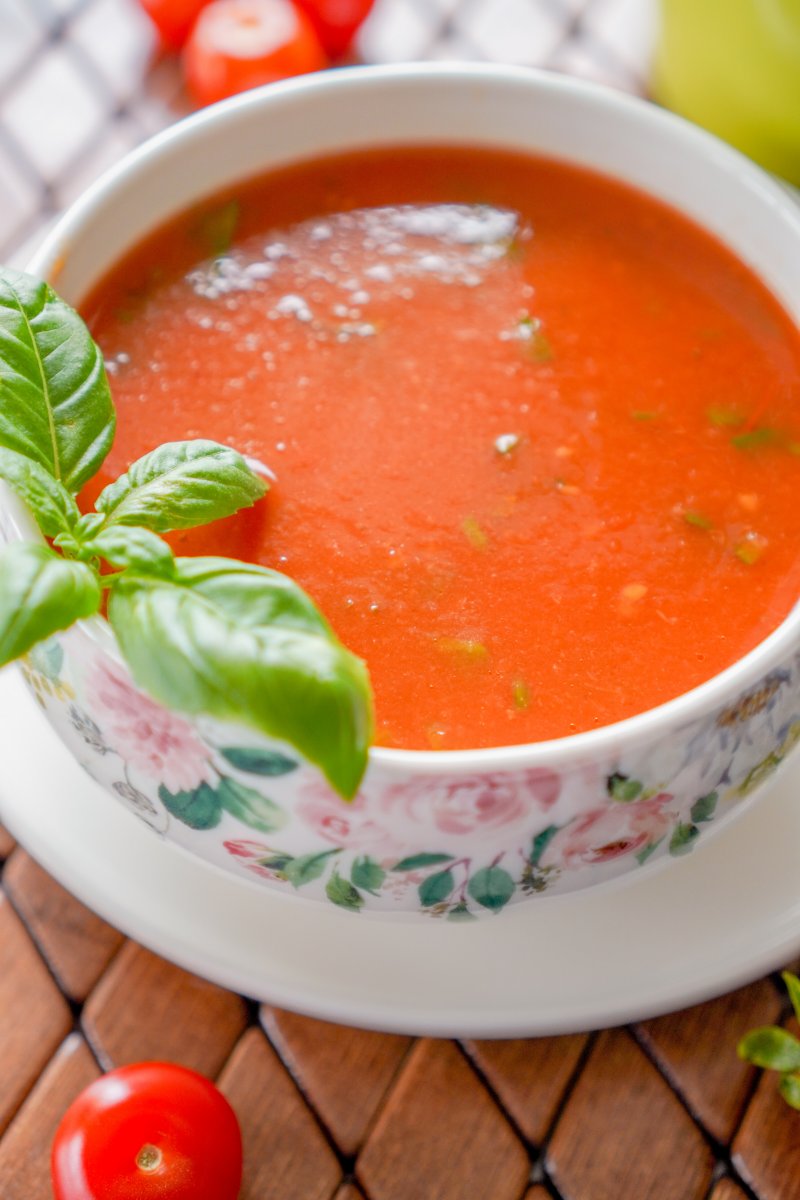
Red Bell Peppers
Red bell peppers have a distinct flavor and sweetness that differs from tomato juice, but they can still work as a creative substitute depending on the dish you’re making. While they won’t exactly replicate the flavor of tomato juice, red bell peppers can add a rich and slightly sweet element to your recipes.
You will need to make a red bell pepper puree (see below) which will likely have a thicker consistency than tomato juice. You can adjust the consistency by adding water, broth, or another liquid to achieve the desired texture. Start with a small amount and gradually add more until you reach the desired consistency.
Red bell peppers have a sweeter and milder flavor compared to tomatoes. You might need to adjust the seasoning in your recipe to balance the flavors. You might also consider adding a touch of acidity (such as a splash of vinegar or lemon juice) to mimic the tanginess of tomatoes.
Red bell pepper puree can work well in dishes where a slightly sweet and rich flavor is desirable. It might not be suitable for all recipes that call for tomato juice, but it can be a creative twist in soups, sauces, and more.
Red bell pepper puree
Start by roasting the red bell pepper. Roasting red bell peppers can enhance their flavor and sweetness, making them more suitable as a substitute for the rich taste of tomato juice. Here’s how to roast them:
- Preheat your oven to broil or high heat.
- Wash the red bell peppers and cut them in half, removing the stems and seeds.
- Place the pepper halves on a baking sheet, skin side up.
- Broil the peppers until the skins blister and blacken, usually about 5-10 minutes.
- Remove the peppers from the oven and immediately transfer them to a bowl. Cover the bowl with plastic wrap or place the peppers in a sealed plastic bag. This will help steam the peppers, making it easier to remove the skins.
- Once the peppers have cooled slightly, peel off the blackened skins.
- Blend the roasted red bell peppers until smooth using a blender or food processor. This will create a puree that you can use in your recipe.
Using red bell peppers as a substitute for tomato juice will result in a unique flavor profile, so be prepared for a different taste experience. Experimentation and adjusting the recipe to your taste will be key in achieving the desired outcome.
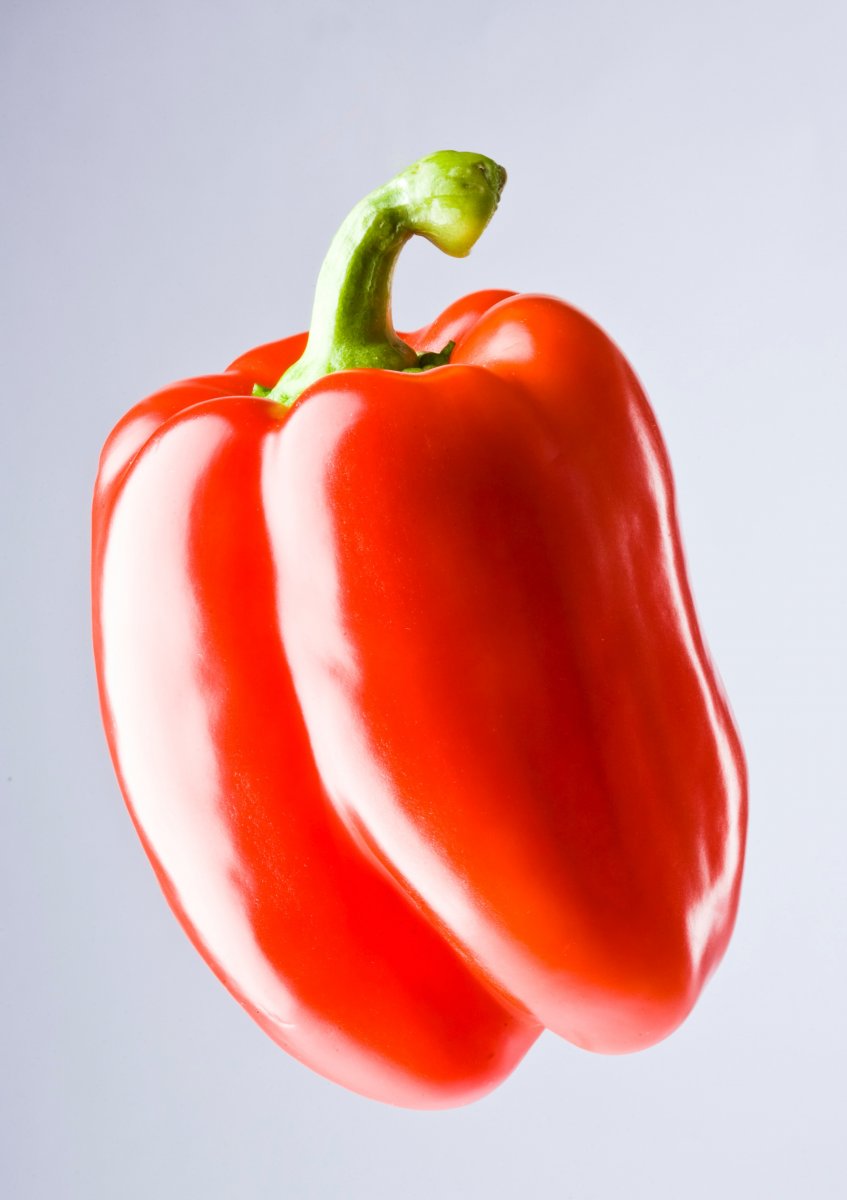
Vegetable Broth
Vegetable broth can be used as a substitute for tomato juice in certain recipes, but there are some important considerations to keep in mind due to the differences in flavor and consistency between the two.
Tomato juice and vegetable broth both have very distinct flavors. Tomato juice is tangy, slightly sweet, and has a tomato-forward taste. Vegetable broth, on the other hand, is savory and might lack the tangy acidity of tomato juice. If the tomato flavor is essential to the recipe, using vegetable broth alone might not provide the desired taste.
If you’re using vegetable broth as a substitute, you might need to adjust the flavor to mimic the tomato taste. You can do this by adding a small amount of lemon juice or vinegar to the vegetable broth to introduce some acidity and tanginess similar to tomatoes. Additionally, you could add a pinch of sugar to mimic the natural sweetness found in tomato juice.
Vegetable broth is a liquid, but it’s not as thick as tomato juice. Depending on the recipe, you may need to adjust the liquid ratio. You can start by using a mixture of vegetable broth and water to achieve a consistency similar to tomato juice.
Using vegetable broth as a substitute for tomato juice is more suitable for cooked dishes such as soups, stews, and sauces. The cooking process will allow the flavors to blend, and the differences in flavor and consistency may be less noticeable.
Consider the nature of the recipe before using vegetable broth as a substitute. It might work well in some savory dishes, but for recipes where the tomato flavor is a key component (like cocktails), the substitution might not provide the intended result.
Remember, while vegetable broth can be used creatively in recipes that call for tomato juice, the final flavor and consistency may vary. Taste and adjust as you go to achieve the desired outcome for your dish.

Beet Juice
Using beet juice as a substitute for tomato juice is possible, but there are some important factors to consider due to the differences in flavor, color, and overall profile between the two liquids:
Beet juice has a distinct earthy and slightly sweet flavor, which is quite different from the tangy and mildly sweet taste of tomato juice. If your recipe relies on the specific flavor of tomato juice, using beet juice may alter the taste significantly.
To mimic the acidity and tanginess of tomato juice, you might consider adding a small amount of lemon juice or vinegar to the beet juice. This could help balance out the flavors and make it more suitable as a substitute.
We all know that beet juice has a vibrant red color, so using it as a substitute will likely affect the overall color of your dish. This could be desirable in some cases, but it might not be suitable for recipes where the natural color of tomato juice is important.
Beet juice might have a slightly different consistency than tomato juice. However, you can dilute the beet juice with water to achieve a similar liquid texture.
Using beet juice as a substitute for tomato juice is better suited for recipes that require cooking, such as soups, stews, and sauces. The cooking process can help mellow the distinct beet flavor and blend it with other ingredients.
Remember that using beet juice as a substitute for tomato juice might result in a unique flavor and appearance. Adjustments to flavor, color, and seasoning will be important to achieve the desired outcome in your recipe.
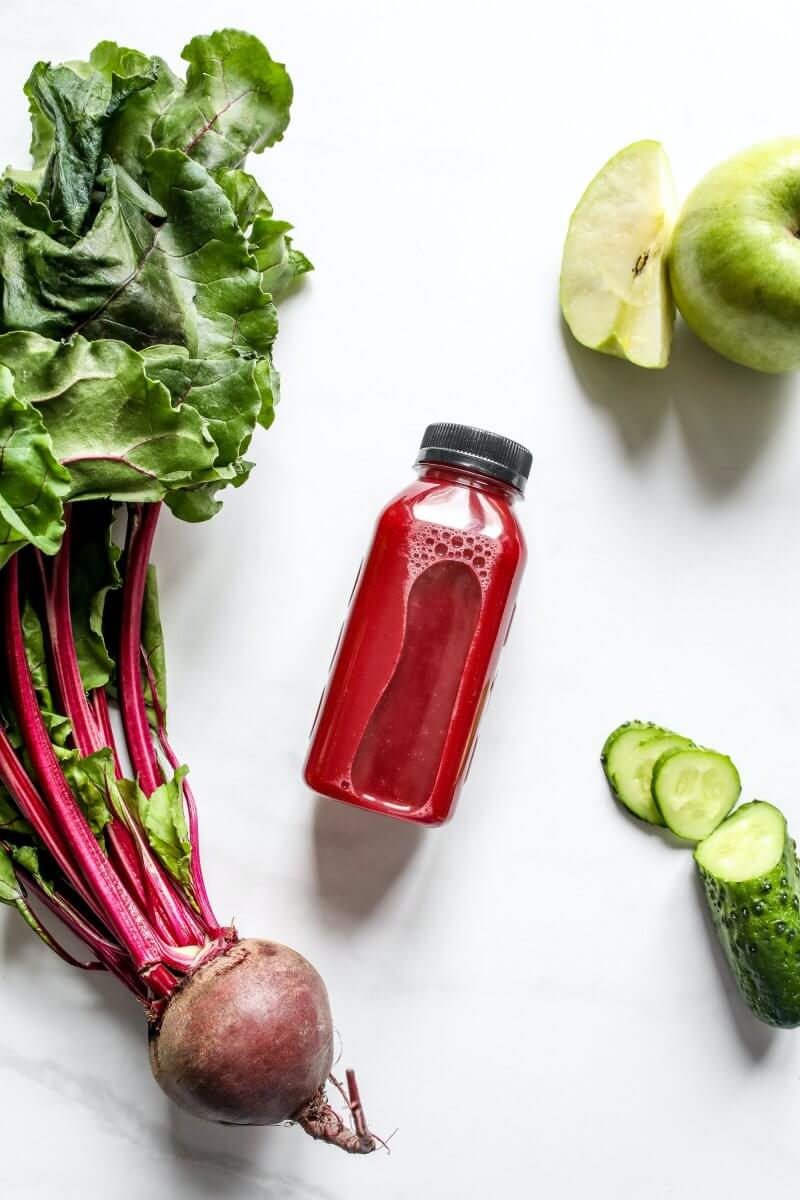
Recipe for Homemade Tomato Juice
Here’s a basic recipe for homemade tomato juice for you to try:
Ingredients:
- 4-6 large ripe tomatoes (or more depending on desired quantity)
- 1/2 teaspoon salt (adjust to taste)
- Optional: 1/2 teaspoon sugar (adjust to taste)
- Optional: Dash of black pepper or other seasonings
- Optional: Fresh herbs like basil, parsley, or cilantro for added flavor
Instructions:
Prepare the Tomatoes:
- Wash the tomatoes thoroughly under cold water.
- Cut out the stem and any blemishes.
- If desired, you can blanch the tomatoes briefly in boiling water for about 30 seconds, then transfer them to an ice water bath. This will help make peeling easier.
Peel the Tomatoes:
- Once the tomatoes are blanched (if you choose to do so), the skins should be easy to peel off. Simply use your fingers to peel away the skin.
Extract the Juice:
- Cut the peeled tomatoes into chunks and remove the seeds if desired. Seeds can contribute to a bitter taste in the juice.
- Use a blender or food processor to blend the tomato chunks until smooth. If you prefer a chunkier juice, you can blend them less.
Strain the Juice:
- Place a fine mesh strainer or cheesecloth over a bowl or pitcher.
- Pour the blended tomato mixture through the strainer to separate the liquid from any remaining solids. You can use a spoon to gently press the mixture and help the juice pass through.
Seasoning:
- Pour the strained tomato juice back into the blender or pitcher.
- Add salt, sugar (if using), and any optional seasonings or herbs. Blend again to incorporate the flavors.
Taste and Adjust:
- Taste the tomato juice and adjust the seasoning according to your preferences. You can add more salt, sugar, or other seasonings as needed.
Chill and Serve:
- If you prefer your tomato juice chilled, refrigerate it for a few hours before serving.
- Serve the homemade tomato juice on its own as a refreshing drink, or use it as a base for cooking or cocktails.
Note:
Remember that this is a basic recipe, and you can customize it to suit your taste preferences. You can adjust the seasoning, add other vegetables like celery or carrots for extra flavor, or experiment with different herbs and spices. Homemade tomato juice is a versatile ingredient that you can use in various ways in your culinary creations.
Summary for substitutions for Tomato Juice
Okay – that’s you all sorted with suitable substitutions for tomato juice.
In conclusion, if you need substitutions for tomato juice there are alternatives out there. But substituting ingredients in recipes requires careful consideration. Think about flavor, consistency, and the overall outcome you’re aiming for. Here’s a summary of the key points regarding using substitutes for tomato juice:
- Fresh Tomatoes: You can use blended and strained fresh tomatoes, but adjustments for consistency and seasoning are needed.
- Tomato Sauce: Tomato sauce can be diluted and adjusted to resemble tomato juice, but be prepared for differences in flavor and texture.
- Canned Tomatoes: Blended and diluted canned tomatoes can work well in cooked dishes, but they might alter the taste slightly.
- Tomato Paste: Tomato paste can be diluted, but its concentrated flavor requires careful adjustment of seasoning.
- Red Bell Peppers: Roasted and blended red bell peppers can create a unique flavor, but it won’t replicate tomato juice perfectly.
- Vegetable Broth: Vegetable broth can work as a substitute in cooked dishes, but flavor adjustments are necessary.
- Beet Juice: Using beet juice is possible, but it will bring a different flavor and color profile to the dish.
In each case, experimentation, adjustment, and tasting are key to achieving the desired outcome. Depending on the specific recipe, some substitutes might work better than others. Always consider the overall flavor, consistency, and visual appeal of the dish when choosing a substitute for tomato juice.
We have gathered together a lot more facts on ingredients such as herbs, spices, oils, nuts, etc. if you would like to learn some more.

